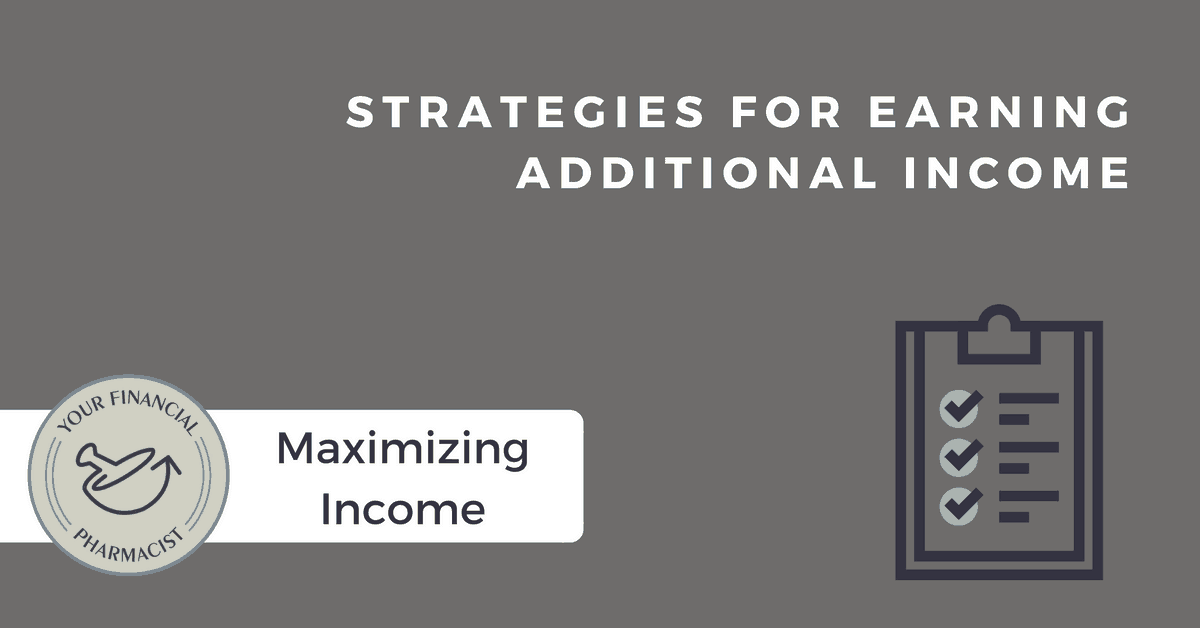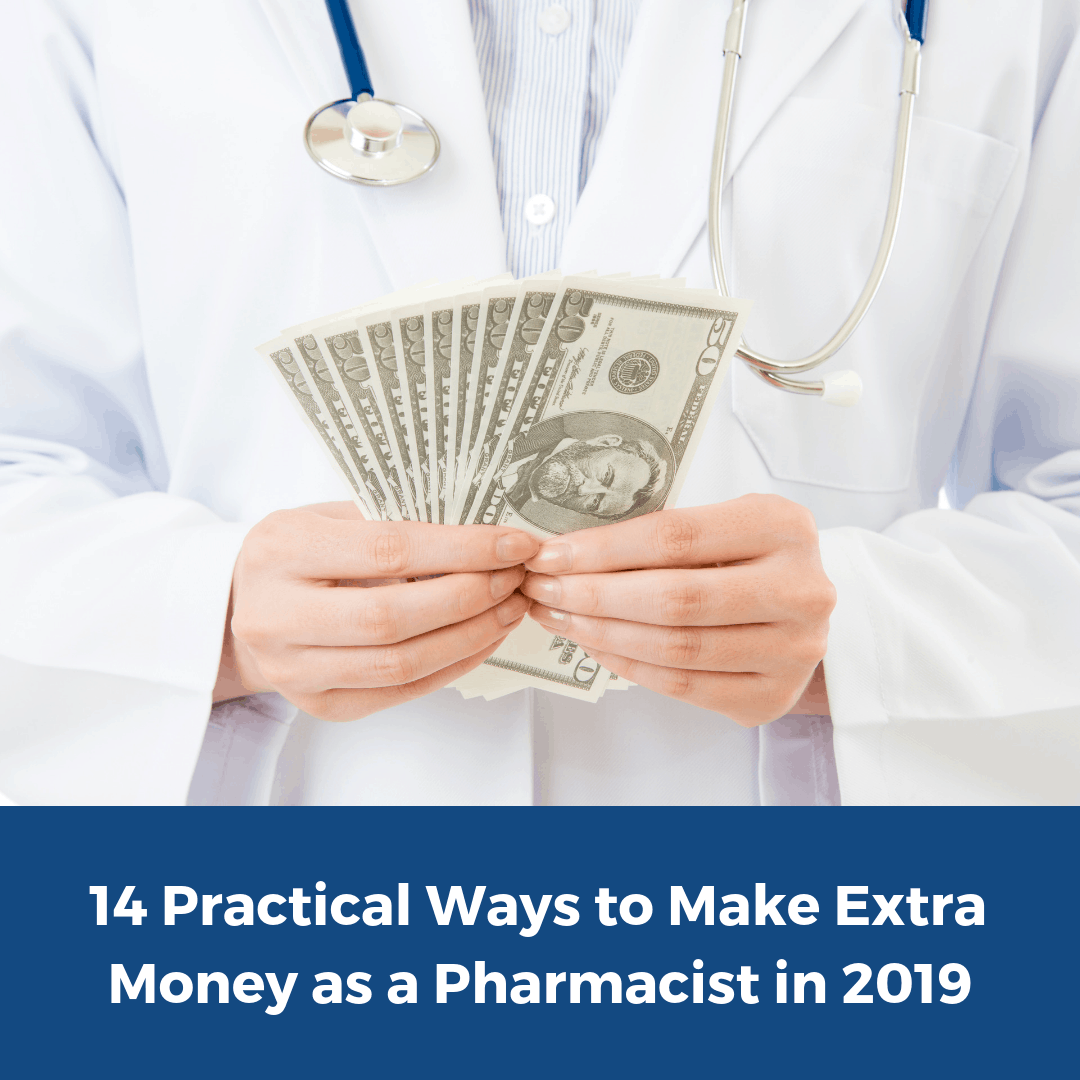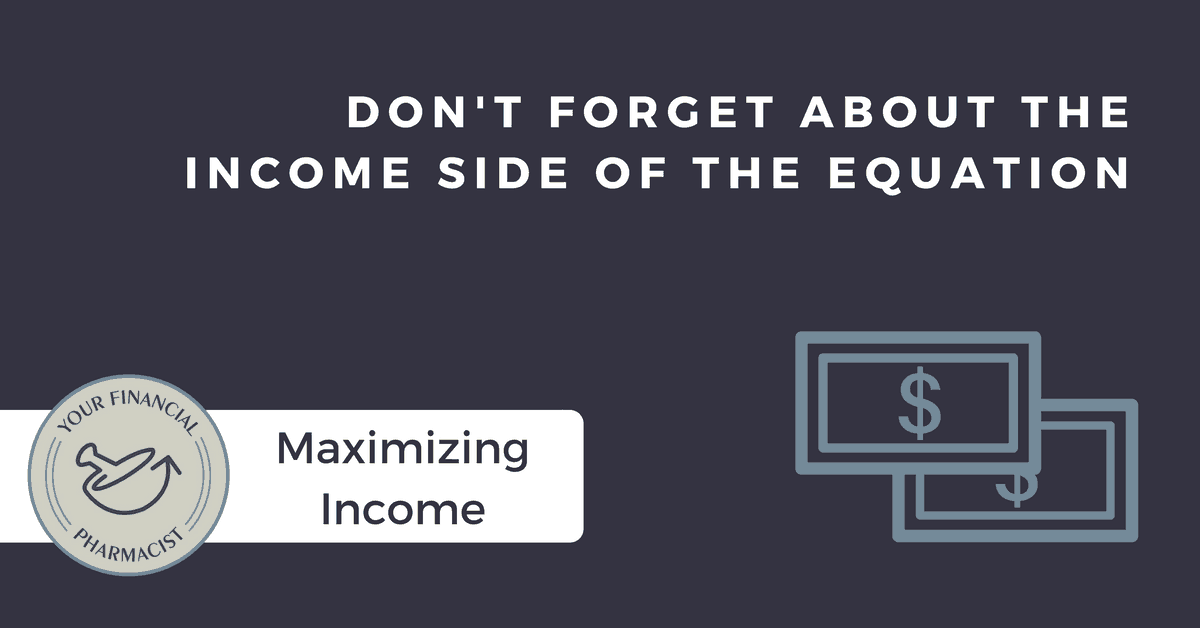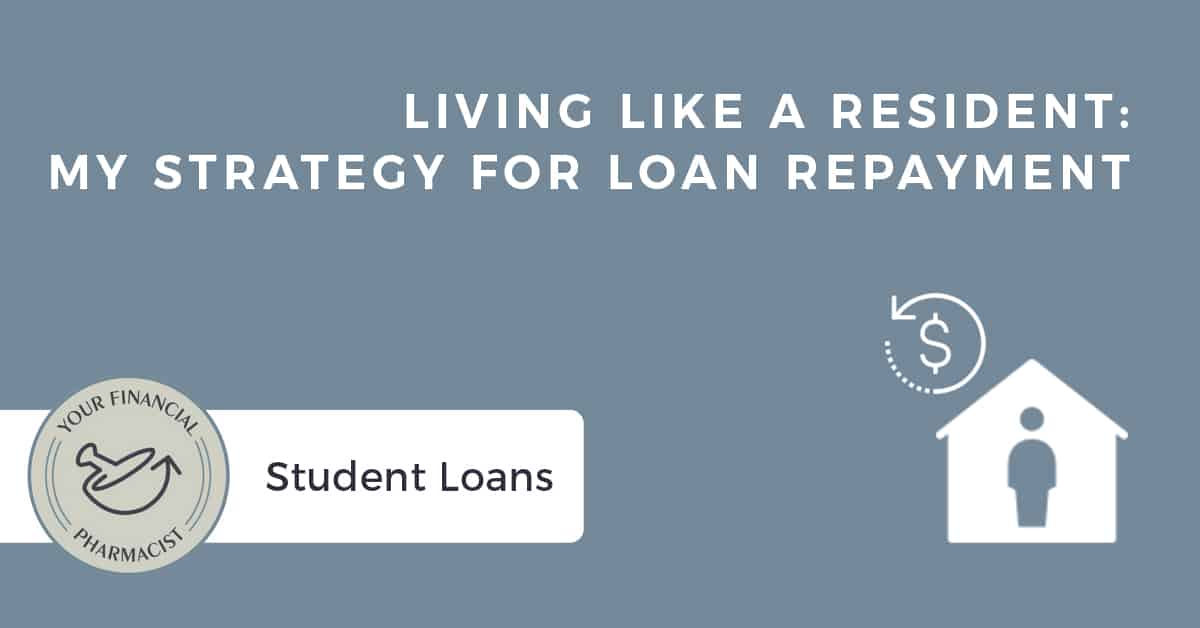In Part 1 of this blog series (Don’t Forget About the Income Side of the Equation), I wrote about (1) why pharmacists should look at opportunities to maximize their income and (2) the importance of knowing the WHY for wanting to do so.
There are many ways for pharmacists to make extra money. The two main categories to get you thinking about earning some additional income; active and passive income. Let’s take a further look at both and some side jobs for pharmacists.
Active Income
With active income, you are trading your time and your skill for money. For most of us, this is what we do every day. We get paid a salary or hourly rate to perform our functions as a pharmacist. Thankfully, for pharmacists, where the median salary is $58/hour, it is a GREAT profession to have the option of trading time for money. As you know, not every profession has the luxury of picking up an extra day’s work for $500 of pre-tax income.
Therefore, the most common and obvious option for pharmacists looking to earn some additional income is to pick up extra shifts with their employer. As you will see with the passive income streams I mention later in this article (which may look more attractive in the long run), this strategy of working extra hours in return for income is likely the fastest way to earn additional income without investing a bunch of time, energy and money to getting something off the ground (such as a book, blog, side business, etc.).
If there are no extra shifts available from your current employer, you could explore PRN staffing opportunities at another employer such as a hospital, community pharmacy, pharmacy benefit manager, mail order pharmacy, or long-tern care consulting company to name a few. Use your network of pharmacy friends to identify companies that have staffing needs!
Other options for earning active income could be starting a consulting business where you can provide your expertise to organizations and businesses that need assistance without hiring a full time employee. For example, maybe you are a clinical specialist that has developed a transitions of care clinic within a large academic medical center and a community hospital near by is interested in doing the same thing. You could set up a limited liability company (LLC), determine an hourly rate for your services and start leveraging your expertise.
Instead of a clinical specialist in a hospital, maybe you are a community pharmacist with 10 years of experience developing and running MTM programs. Could you consult with other pharmacies (probably best to do so outside the area you are working that would be considered competition) to help them establish their own MTM program? Similar to the example above, you could establish an LLC and market your services to pharmacies looking to implement similar services.
It is a good time to mention that with all work you are doing outside of the scope of your day job, you should be very clear on the policies and procedures your employer has on you doing such work to make sure there are no conflicts of interest. After all, if you lose your current job because you are spending time outside work building a consulting business that is in conflict with what you are allowed to be doing, you just negated the purpose of earning extra income. Depending on your employer and their view of you doing these types of activities, you may have to go outside of the area where you are working which may be viewed, in their eyes, as direct competition to what they are paying you to do for your day job.
Another option for earning additional income would be to seek teaching opportunities either at local college of pharmacy that may pay you an honorarium or another health professions program (e.g., nurse practitioner, physician assistant, pharmacy technician, or podiatry) that is in need of pharmacist expertise. If you love teaching and the idea of shaping future practitioners, this is a fantastic opportunity since you will see and feel value in that aspect of the work. However, if you are looking at this as a primary revenue stream, I would use great caution here as your preparation time for class and grading afterwards (if required) will likely be much greater than the time you are being paid to be in class.
If you enjoy writing and are considered an expert in your practice area, you could consider writing CE articles and/or speaking opportunities through various trade journals and state and national professional organizations. Similar to teaching opportunities, if you factor in your total time spent in relation to payment, this usually does not come close to an hourly rate for a pharmacist but could be an excellent way to build your brand which could lead to additional opportunities.
Last, it is important not to lose sight of the things you can do within your current job to increase your income, including, but not limited to the following: (1) asking for a raise if you feel it is warranted; (2) seeking opportunities for a promotion within the organization; (3) gaining additional credentials (such as your board certification) that may allow you to earn additional income in your current position and/or be more attractive for a different position.
Passive Income
Generating passive income (where you are not trading your time for money) seems to be all the rave these days. I think there is a grandiose and unrealistic vision in many people’s mind of a NY Times best selling author sitting on the beach sipping margaritas while the income from book sales comes rolling in. While passive income can seem attractive on the surface (and certainly can be over time), what we often don’t see and hear as much about is all the time, sweat, tears and failures that occur all the way up until the point someone is making “passive income.” Before something ever becomes available for sale, there has been countless hours put behind creating whatever product is being launched.
Caution: If your financial situation is such that you are trying to pay off debt, build an emergency fund, or get any part of your financial foundation in place, any efforts towards building a business that has passive income should not cost you a lot of money. However, if you have time and that can be your main currency of investment to get this venture off the ground, go for it!
So what are some common examples of passive income that pharmacists could explore?
Writing a book in your area of expertise. If you enjoy writing, this could be incredibly rewarding while providing some ‘passive income.’ I put passive income in parentheses because after you account for your time in writing and editing, you might be making closer to minimum wage than you would be a pharmacists salary. However, once you get the first version off the ground, if you are successful in building an audience to promote your product, the true benefits of the passive aspect start to become reality as time goes on.
Starting a blog. While you may not see a blog as having passive income on the surface, a blog can become a foundation for advertising and promoting other products that you create over time (e.g., book, online course, podcast, etc.). Most blogs are not successful in earning money because of the time it takes to keep up with writing on a regular basis and promoting that content to effectively build an audience that cares enough to keep coming back (and hence, be interested in buying something else you are selling).
Developing an online course. Pharmacists are very used to the idea of completing CE hours and attending certificate training programs, so developing an online course could be a worthwhile endeavor. For example, maybe you are an ID specialist with extensive experience in developing antimicrobial stewardship programs. Could you develop an online training program for $99 (or whatever price you decide) that teaches others how to develop, implement and evaluate an antimicrobial stewardship program? Maybe you could even partner with a state or national organization to help you promote this program and in turn share the revenue.
Building a membership site. This one may be harder to visualize than the others mentioned above but the idea here is to create exclusive content that provides tremendous value in return for regular payment (e.g., monthly fee). For example, maybe you are a pharmacy educator that has years of experience developing classroom materials, test questions and other assessment activities. Could you develop a membership site, where for $9.99/month, faculty from across the country could join to get exclusive tools/resources to help them in their own teaching experiences? Maybe you could even create a separate forum where only those that pay for the membership site could pose questions where you or others in the membership site respond to help them with their teaching needs, to give feedback on test questions, etc.
Investing in real estate. We are getting outside the pharmacy box now to look at opportunities for passive income that you could generate without having to wait until you are old enough to access your retirement funds. If you are in a financial position to do so, you could look at owning a second property in the town you currently live or a place you vacation regularly. Ideally, this property would be rented out at a rate that would cover at least your mortgage , taxes, insurance, and maintenance on the home. I have heard both the lucrative and horror stories of real estate investing so make sure to do your homework before jumping into this opportunity. One of my classmates from Ohio Northern University, Ben Holter, wrote an excellent blog post on this topic that is worth checking out if you have not already done so (Real Estate: The Investment You Should Not Overlook).
Affiliate marketing programs. In short, affiliate marketing programs allow you to promote another product in return for a percentage of that sale. For example, Amazon has an affiliate program where you can sign up to promote a book (or other content as well) and in return get a certain percentage of all sales purchased by the individual clicking to buy that product (using your unique URL). While one way to take advantage of affiliate programs is to be an affiliate for someone else’s product, another way is to leverage affiliates for the product you are trying to promote. For example, maybe you are promoting a recent book you published and you have several other pharmacy colleagues that help you promote the book and in return (through a unique URL identifying that individual), they receive a portion of the sales. While you are giving up some of the revenue, you are likely having a broader reach than you could have had on your own.
Examples of Pharmacy E-Entrepreneurs
If you are a pharmacist thinking about starting up a side business (or even side hobby that may turn into a business over time), one of the best steps you can take is to see who else is out there in the pharmacy community doing this type of work. Besides checking out the work Dr. Blair is doing with her business BT Pharmacy Consulting, here are some others for you to explore:
- Alex Barker, PharmD – ‘Side Hustle Coach’, author and podcast host of Pharmacy Life Radio and the 66 Day Experiment.
- Eric Christianson, PharmD, BCPS, CGP – creator of Med Ed 101; a popular education site for pharmacists and pharmacy students preparing for board certification or the NAPLEX.
- Tony Guerra, PharmD – author (Memorizing Pharmacology: A Relaxed Approach and How to Pronounce Drug Names: A Visual Approach to Preventing Medication Errors) and podcast host of “Pharmacy Future Leaders” of the Pharmacy Podcast Show.
- ID Stewardship by Timothy P. Gauthier, PharmD, BCPS-AQ ID – very popular infectious disease blog for students and pharmacists.
The Time Investment is Real…and Rewarding
From experience and talking with many pharmacists working in these areas of developing passive income streams, I can tell you that these take an incredible amount of time, energy and effort to build before you may have $1 to show for it. If the idea of spending months and hours of time with the potential of still having something fail isn’t for you, then I would suggest holding off on pursuing these options. However, if the thrill of starting something to provide a solution to a problem that you see (whatever that may be), then this may be for you!
Tax Advantages
Without getting into the weeds on taxes for the sake of my sanity and you staying awake, there are significant tax advantages of turning a side project into a business. Setting up a business structure is much easier than you think and can result in being able to deduct business expenses and employing other family members to reduce your taxable income. If you are interested in learning more about the tax advantages of owning your own business, I would recommend reading or listening to Tax Free Wealth by Tom Wheelwright.
Your Financial Homework
If you read Part 1 of this blog-series, you will remember the $1,000 challenge I put in front of you. Here it is again for those that may not have seen it or to provide some extra motivation for those that have accepted this challenge.
In the next 90 days, make a commitment to earn $1,000 beyond your current income to throw directly at your top financial goal for the coming year. Whether that goal is debt repayment, saving up for a home, saving for kids college, opening a Roth IRA or something different all together, I am confident the momentum you will get from $1,000 going directly towards you goal will catapult you into doing more. Once you do this, share your success with me at [email protected]
So what would an extra $1000 (net income after taxes) do for you in 2017?
- If you don’t have an emergency fund in place, it would be a great way to get together a ‘starter’ emergency fund that you can build upon over time. This could help give you peace of mind knowing that in the event of an emergency, you have some buffer to take on an expense without having to take on more debt.
- Or how about retirement savings? If you were to invest $1000 today in a Roth IRA and the money were to earn 8% growth over the next 40 years, that $1,000 would turn into almost $25,000 tax-free!
- Or how about paying off debt? If we assumed that you had $100,000 in student loan debt remaining at 6% interest (under the 10 year repayment plan) and you were able to throw $83 extra per month ($1000 per year) above and beyond your principal starting this year and continuing here on (because we will keep the momentum going!) you will save over $3000 in paying interest and have the loan paid off almost 1 year earlier.
- What about college savings? Maybe you are debt free with a good emergency fund in place and on your way to saving for retirement so you want to start a college fund for your newborn. If you were to start saving $83/month for your newborn from now until they go to college in a tax-free growth account (such as a 529 plan), you would have almost $40,000 saved to pay in cash for college.
Talk about BIG WINS with a small start…start the momentum TODAY!
Looking for more side jobs for pharmacists or ways to make extra income?
Current Student Loan Refinance Offers
[wptb id="15454" not found ]Join the YFP Community!
Recent Posts
[pt_view id=”f651872qnv”]






